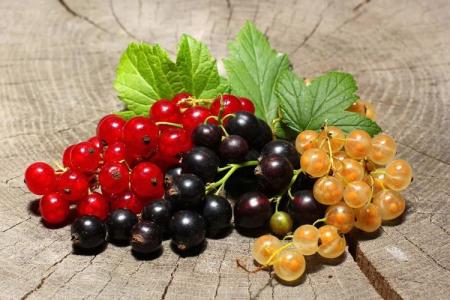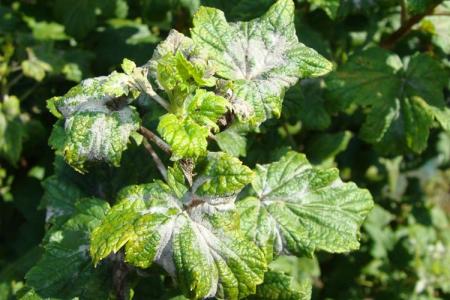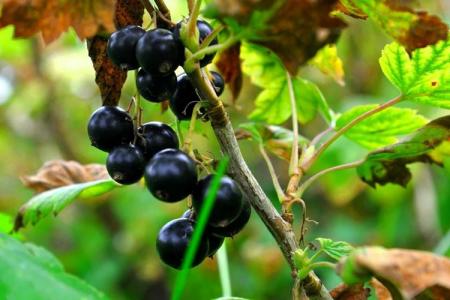
The useful properties of currants can be listed for a very long time, because it is not for nothing that gardeners are so fond of it. But even such a valuable berry for our immunity suffers from its own diseases. Most of them first appear on the leaves, so it is important to notice and get rid of the trouble in time!
Bumps and bumps on the leaves
Incomprehensible formations or outgrowths can be insect pests. But the relief of the plate itself changes periodically, and here it is important to exclude serious consequences in time.
- Swollen red bumps on currant leaves look intimidating. But this is just a gall aphid that hides on the back of the plates. It’s unpleasant, but it’s pretty easy to deal with;
- Thrips leave behind very small bumps and brown spots;
- Tumors on different parts of the shrub, including the leaves, appear when bacterial cancer is affected;
- Red bulging spots can be left by anthracnose - a dangerous fungus that will ruin crops without treatment.
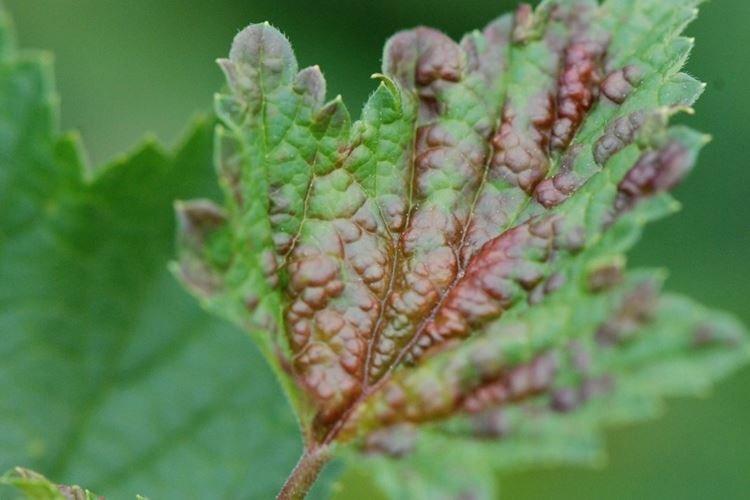
Leaves turn yellow and dry
It is not at all surprising if the leaves turn yellow in the fall or dry out in the summer from the heat. But during the year, the currant reacts in this way to completely different problems: from improper care to the initial stages of serious diseases!
- If the currants have little water, the leaves will turn yellow and dry from the edges. The same thing happens if she is too hot on sunny days;
- When the sun is out for too long, the plants turn yellow due to the lack of light. The fact is that the processes of photosynthesis and the release of green pigment are disrupted;
- When there are no other symptoms, and the conditions are normal, the problem may be verticillary wilting. It is important to diagnose a fungus inconspicuous at first glance as early as possible;
- Due to gray rot, currant leaves can literally dry out before our eyes, but fungicides will help;
- When all the leaves are chaotically covered with spots and stripes that form a bizarre pattern - this is a viral mosaic, and it does not heal.
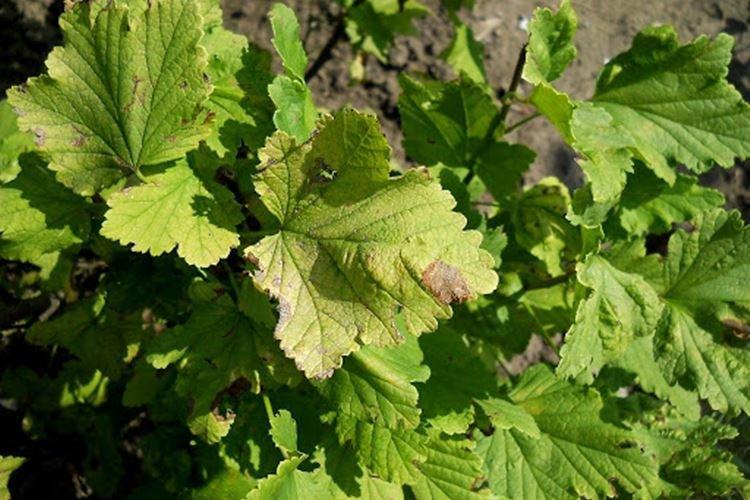
Brown spots on currant leaves
If the bush is already covered with brown spots, there are no options left, and it is definitely sick. In the best case, the currant has a weakened immune system due to a lack of trace elements, but most often this is how the fungus manifests itself.
- The spots on the leaves darken and soften in the initial stages of decay. Perhaps the currant bushes were accidentally flooded and the earth needs to be thoroughly dried;
- Due to anthracnose, currant leaves are covered with brown spots with a whitish middle. Gradually, the fungus spreads to the entire bush, and the yield drops significantly;
- Red spots are the main symptom of fungal rust, which is successfully treated with fungicides;
- If a shrub is damaged by late blight, its root system suffers greatly. The leaves change color to brown from the base, and - starting from the lower ones;
- Spots of a grayish-brown shade appear on currants with Alternaria. In this case, the leaves appear velvety to the touch.
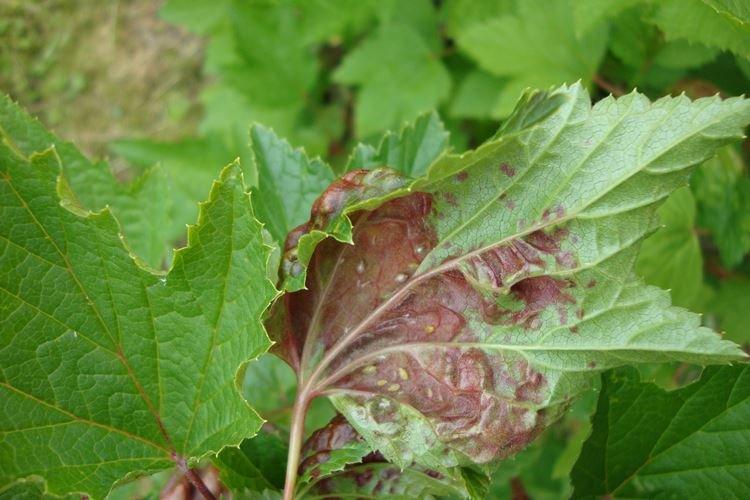
Holes on currant leaves
If holes began to appear on the leaf plates, then someone literally eats them up. Numerous caterpillars, which are especially fond of fragrant berry bushes, are dangerous for this.
- Most often, currant leaves are eaten by weevils. They prefer raspberries and strawberries, but can spread to the entire garden;
- The name of the leaf beetle speaks for itself, and the gluttonous bug eats the pulp of the leaf completely to the veins;
- Almost all types of spotting can lead to the fact that individual affected spots die off. These are anthracnose, white, brown and brown spots.

Currant leaves turn black
Most often, necrotic foci are an already advanced stage of the disease.This is especially true for damage to the rhizome, which is difficult to diagnose in time. But occasionally there are other reasons as well!
- Black spots on leaves and shoots can be a symptom of black rot;
- Black dots gradually extending into oval spots - a sign of black spot;
- Leaves, shoots and buds of currants turn black with a bacterial burn;
- If the entire plate is covered with black plaque, which seems to be erased, it is probably a sooty fungus;
- Young leaves turn black, barely opening, if the root system is damaged by fungus and rots.
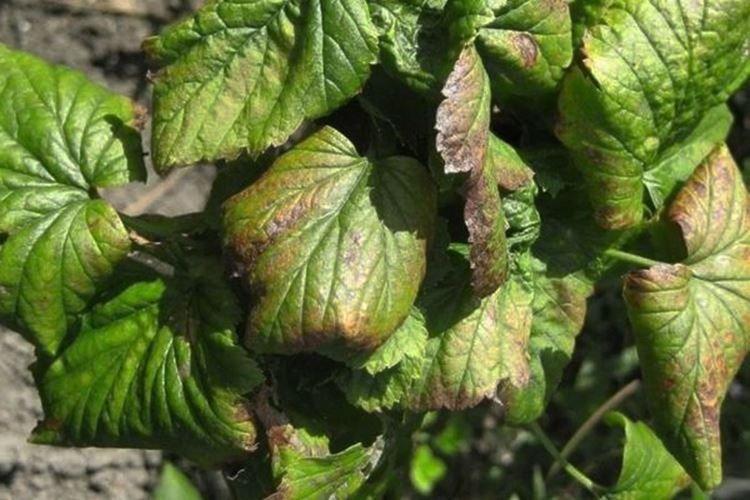
White bloom on currant leaves
A whitish spider web that resembles a thin coating is a product of the vital activity of pests. And if the white bloom looks soft and velvety, as if it can be erased with a finger, the currant is captured by the fungus.
- The main reason for white bloom is powdery mildew, which every gardener will inevitably face. She especially loves warm and humid days;
- In the same way, another fungus prefers wet days - downy mildew. She has a different pathogen, although the treatment ultimately remains the same;
- A spider mite abundantly braids leaves and shoots with a thin and light cobweb, which from a distance can also be mistaken for a plaque.
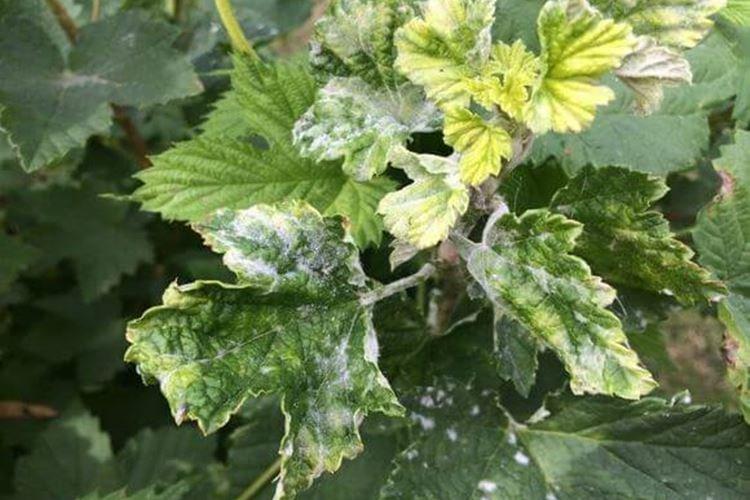
Pale and light leaves
If the leaves turn pale evenly throughout the plate, this may be a symptom of chlorosis. But chlorosis can hardly be called a specific disease, because it is just an external manifestation of a number of deviations.
- If the sun is badly lacking in the currants, then the young leaves will grow pale;
- The shrub weakens and fades if it is cramped and stuffy. Therefore, it is important to maintain the distance between the seedlings and do sanitary pruning;
- If the leaves fade for no apparent reason - perhaps the soil is too depleted and it's time to feed the currants.
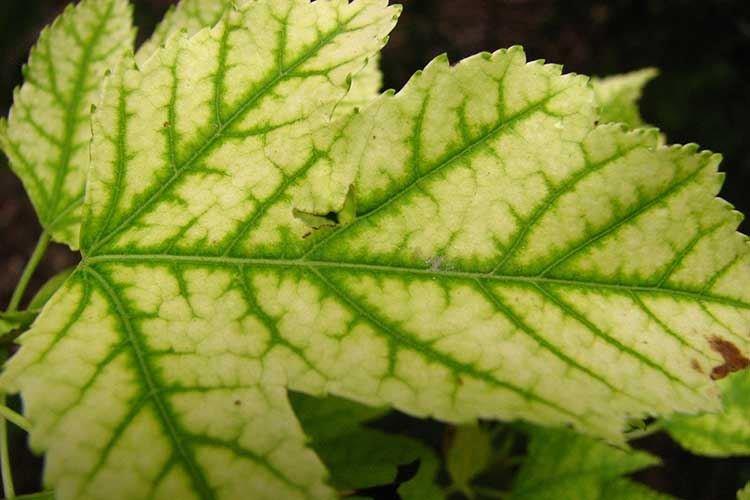
Currant leaves curl
Deformation of the leaves can be external or mechanical, and then the currants were attacked by pests or fungi. But if the leaves are already growing painful, it is possible that this is a virus that has already entered the cells of the plant.
- Leaf rollers eat up the leaves from below, fold and glue the plates, and then pupate inside;
- Leaves dry, change color and deform in all sorts of directions with a deficiency of trace elements. It is difficult to determine exactly what is missing - zinc, magnesium, iron or molybdenum. Therefore, we recommend using complex immunomodulatory drugs;
- If currant bushes grow too closely or no one has thinned them for a long time, then the leaves can curl and wither from lack of air;
- The curl virus manifests itself infrequently, but it is important to notice it in time and get rid of the infected plant.


